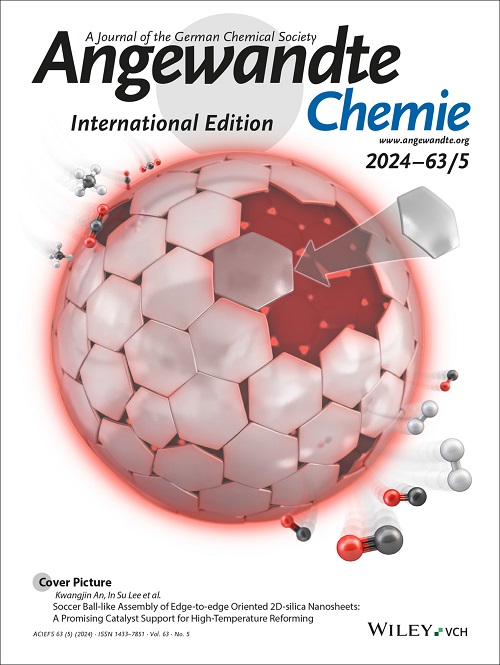Peripheral Engineering of Multiple‐Resonance Framework Targeting Efficient Organic Lasers
IF 16.1
1区 化学
Q1 CHEMISTRY, MULTIDISCIPLINARY
引用次数: 0
Abstract
Multiple‐resonance thermally activated delayed fluorescent (MR‐TADF) emitters have emerged as promising candidates for organic laser applications due to the potential for simultaneously achieving large oscillator strength and triplet utilization. In this study, we investigate the impact of peripheral tert‐butyl (t‐Bu)‐ and phenyl (Ph)‐substituents on the typical 9‐(phenylcarbazol‐3‐yl)‐9H‐carbazole‐3‐carbonitrile (CzBN) MR framework. While these modifications preserve the frontier molecular orbital distribution with large oscillator strengths, they significantly influence excited‐state dynamics and molecular aggregation at even low doping concentrations. Introducing Ph substituents extends the π‐conjugation extension of CzBN, promoting closer molecular packing, detrimental molecular aggregation, and significantly broadening the excited‐state absorption (ESA) band, which negatively impacts lasing performance. In contrast, CzBN‐tBu, incorporating t‐Bu groups as non‐conjugated substituents, demonstrated reduced molecular aggregation and a distinct separation between the ESA band and stimulated emission region. Consequently, the optimal distributed feedback lasing performance is achieved by CzBN‐tBu across various doping concentrations, resulting in the lowest lasing threshold of 3.4 µJ cm−2. These findings underscore the impact of inherent aggregation at low doping ratio on lasing activities, highlighting the crucial role of rational peripheral engineering in modulating molecular interactions and excited‐state dynamics, offering design strategies for developing MR lasing molecules.求助全文
约1分钟内获得全文
求助全文
来源期刊
CiteScore
26.60
自引率
6.60%
发文量
3549
审稿时长
1.5 months
期刊介绍:
Angewandte Chemie, a journal of the German Chemical Society (GDCh), maintains a leading position among scholarly journals in general chemistry with an impressive Impact Factor of 16.6 (2022 Journal Citation Reports, Clarivate, 2023). Published weekly in a reader-friendly format, it features new articles almost every day. Established in 1887, Angewandte Chemie is a prominent chemistry journal, offering a dynamic blend of Review-type articles, Highlights, Communications, and Research Articles on a weekly basis, making it unique in the field.

 求助内容:
求助内容: 应助结果提醒方式:
应助结果提醒方式:


